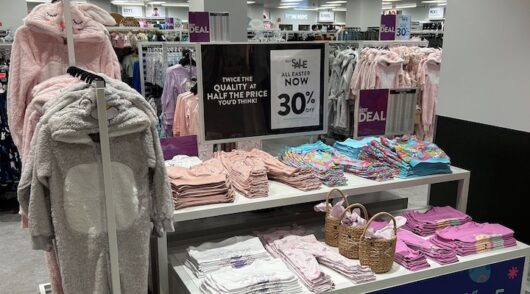The impact of inflation and the rising cost of living has radically changed the way Australians are shopping, and is creating a turbulent outlook for retailers as shoppers tighten their purse strings.
With customers implementing more cost-cutting measures than ever, retailers need to quickly adapt to better meet their demands with shopping experiences that add value.
In a recent webinar with Inside Retail, Neilsen director, media analytics and consumer research, Shruthi Babu told attendees that, at a time when customers are increasingly feeling inflationary pressures, retail catalogues have become an important way for shoppers to make buying decisions.
“We’ve been seeing a trend since Covid-19 onwards that brand loyalty is in question, and consumers are looking for alternatives, deals and promotions,” Babu said.
“If customers can [find a way to] cut back on costs, they’ll go for a cheap option.”
According to recent Nielsen research, which surveyed 1200 Australians over the age of 18, 68 per cent of consumers that declared to be impacted by the current economic conditions and rising cost of living said that they browse catalogues prior to making discretionary purchases to save money and find the best deals, while 66 per cent said that they’ve started to plan their grocery shopping in advance by browsing catalogues and special offers to save money.
In fact, while internet search is the most common method of gathering information for an upcoming shop, catalogues are a close second, ahead of social media and more traditional forms of advertising.
Watch the full webinar here.
However, the shift is overwhelmingly toward newer, digital forms of catalogues: in 2022 the share of consumers preferring the digital catalogue over the paper one was 44 per cent, while in the last two years, the share of consumers that prefer the paper format decreased starting from 30 per cent in 2021 and 28 per cent in 2022.
Part of this is due to ease of use, but Babu noted that much of the push is environmental – with customers increasingly looking for ways to avoid wasting paper, especially those between 18-39 years of age.
Beyond sharing deals and promotions with customers, catalogues serve an important second purpose, Babu said. According to Nielsen’s research, digital catalogues are the most effective medium to drive customers in store.
Despite the push toward online retail during the pandemic, most commerce is still done in person at brick-and-mortar stores. Not only this, but shopping in-store allows customers to ask questions of staff, and be more informed and comfortable in the purchases they’re making.
Drive-to-store expert ShopFully’s country manager for Australia Brendan Straw said that catalogues play an incredibly important role in getting customers in store.
“[They’re] helping consumers identify the right offers for them, and more importantly from a retail lens, helping retailers boost sales,” Straw said.
He noted that, traditionally, catalogues have been used in Australia in order to expand a store’s reach, but that in the modern retail landscape where any brand can exist online and reach millions of customers, the catalogue should be reframed as a piece of customer engagement.
And, according to Straw, data will play a key role in this transition.
“I think we’re going to be really trialling content, and we’re going to be using data to populate our digital catalogues, and we’re going to automate the process significantly through engagement with various technology tools,” Straw said.
“[The catalogue] really is an environment that allows us to open a door and start to learn what our customers are saying, and optimise our performance [to that].”
To learn more about how catalogues can play a key role in the way businesses can connect with customers, as well as boost their digital and in-store experience, click here to download ShopFully’s The Power of Catalogue’s report.






